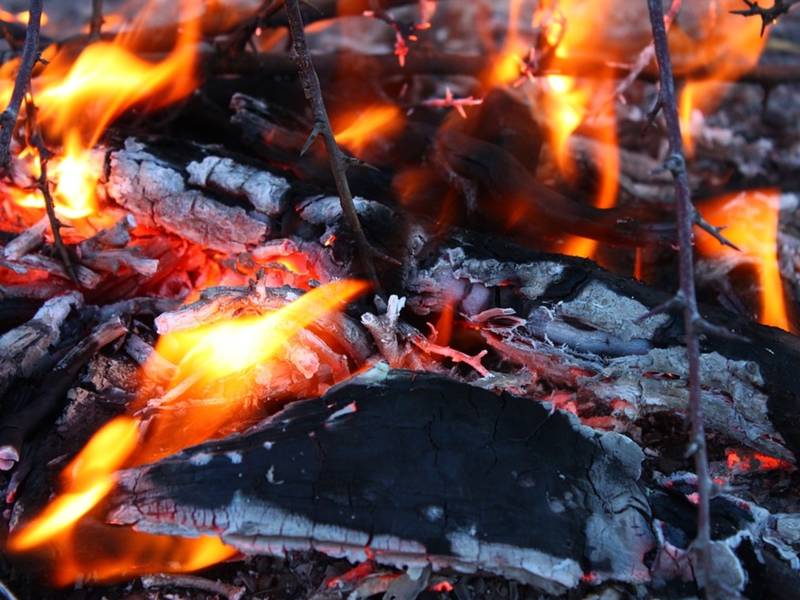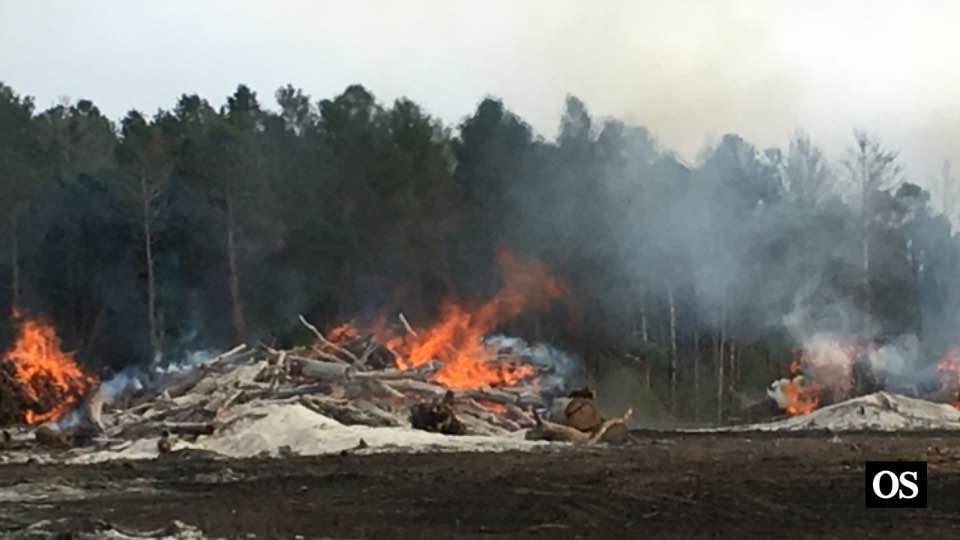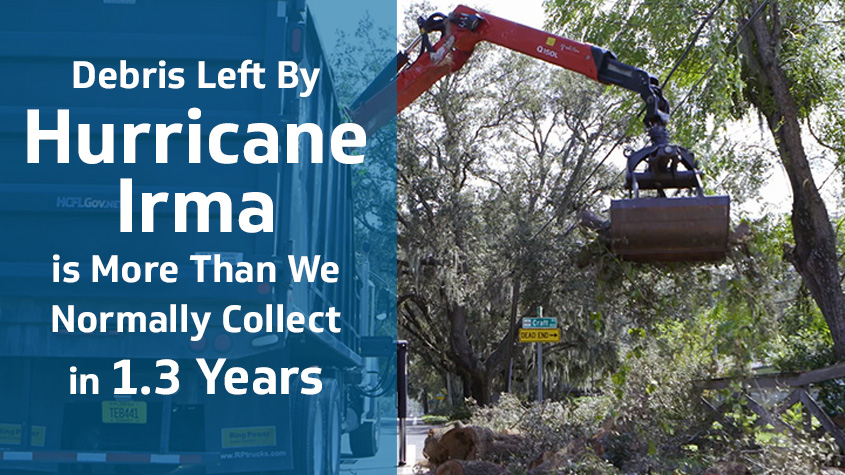DEBRIS BURN: Hurricane debris from Irma is burned in Orlando, Florida this year. The amount of debris collected is equal to the amount of trash collected in 1.3 years.
CRUZ BAY – The Sierra Club, Island Green Living Association and the Virgin Island Conservation Society have notified the Federal Emergency Management Agency (FEMA) and the U.S. Army Corps of Engineers (CoE) that they will bring a lawsuit to prevent large-scale burning of debris from Hurricanes Irma and Maria in the territory.
The Notice of Intent asserts that the planned burning of hurricane-related debris using incinerators presents an imminent and substantial endangerment to health and the environment in violation of Section 7002 of the Resource Conservation and Recovery Act (RCRA).
At the direction of FEMA, the U.S. Army Corps of Engineers has brought hurricane-related wood debris to Body Slob in St. Croix. Located near a number of schools and residences, this is where the Army Corps intends to burn up to 400,000 cubic yards of the waste using an open and uncontrolled air curtain incinerator, which is little more than a dumpster and an industrial fan. This is the strategy despite a sustainable Debris Management Plan submitted by debris management experts, local residents and environmentalists, including Island Green Living.
The air curtain incinerator has no pollution controls; particulate matter and other air pollutants will be emitted directly into the communities next to the incinerator. Burning wood in a hot and humid environment is especially problematic as humidity will trap the air pollution in the area. Also of special concern are poisonous trees, such as the Manchineel tree, which is extremely toxic when burned. This wood has not been separated out.
“We have a green governor. However the Army Corp of Engineers have presented less than accurate information that is biased toward incineration in order to influence the governor,” said Harith Wickrema, president of Island Green Living Association. “Additionally if the territory agrees to burn, the Army Corp of Engineers and FEMA have agreed to cover all costs, even after six months. The same provision is not extended if the territory uses sustainable measures such as composting/mulching despite similar costs.”
On November 20, a letter was emailed to Gov. Kenneth Mapp and Senate President Myron D. Jackson by 13 prominent public health experts and scientists calling for a ban on the proposed incinerator due to health and environmental concerns. (See page 8:http://islandgreenliving.org/w
“We appreciate FEMA and the Army Corp and all they have done during this disaster. Due to the gravity of the eminent health hazards to our residents however, we will introduce legislation to place a ban on the burning of hurricane debris throughout the USVI,” said Senate President Myron D. Jackson, VI Legislature.
There are numerous examples of chemical hazards in emissions from the combustion of this debris that present known human health hazards. These include ultrafine particles, fine particulate matter (PM2.5), carbon monoxide, and polycyclic aromatic hydrocarbons (an extremely toxic class of combustion byproducts). This is especially dangerous for those with respiratory and cardiac conditions.
“Children are uniquely sensitive to exposure from smoke coming from these incinerators. It is irresponsible for anyone to incinerate this waste next to children and the elderly,” stated Jane Williams, Chair of the Sierra Club’s National Air Team.
“Air curtain incineration will not only increase harmful emissions into our atmosphere, but it will also turn our fallen trees, limbs and vegetation into ash,” said Jason Budsan of the Virgin Island Conservation Society. “Compost and mulch are needed to rebuild our soils due to many years of erosion and hurricane related events. We must ‘turn, not burn’ our way towards recovery and salvage our fine woods, such as Mahogany, for craftsmen and fine furniture makers.”
Neither FEMA nor the Corps have submitted a permit application for burning from an air pollution control agency, including the EPA and the U.S. Virgin Islands Department of Planning and Natural Resources, but they are intent to move forward regardless. The Sierra Club, Island Green Living Association and the Virgin Island Conservation Society intend to file suit in the United States District Court for the Virgin Islands if the agencies proceed with the incineration project. The groups are represented by Kenneth J. Rumelt, Professor of Law and Senior Attorney, Environmental and Natural Resources Law Clinic, Vermont Law School.



